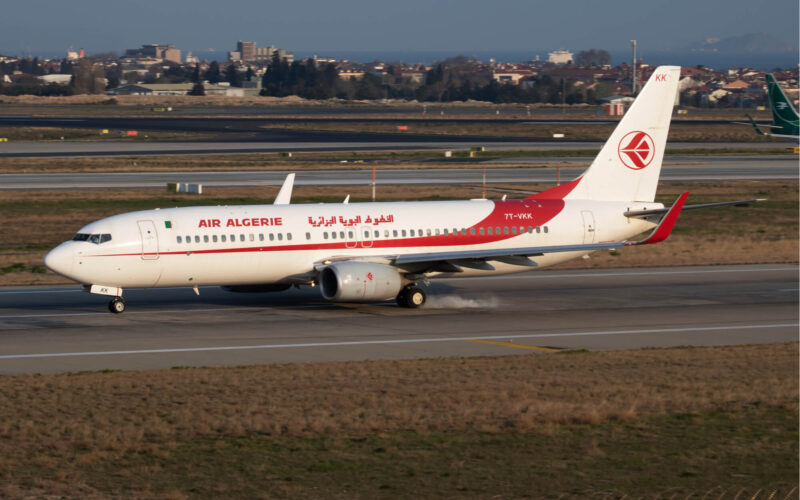French accident investigators have detailed a serious incident involving an Air Algerie flight that lost altitude during a go-around at Paris Orly (ORY) airport.
In its final report published October 12, 2021, the Bureau d’Enquetes et d’Analyses (BEA) cited startle effect, a hybrid use of automatic systems, a missed approach procedure requiring high workload and a breakdown in crew cooperation in the incident, as factors that led to the plane deviating from its expected path.
“Crews must not hesitate to disconnect the automatic systems when they no longer understand them,” the BEA said.
The Boeing 737-800, registered 7T-VJM, was approaching runway 25 at ORY at around 11:15 am on 6 December 2019. The flight was cleared to land, but when the aircraft was at 477 feet altitude, equivalent to a height of 193 feet above the ground, the controller ordered the plane to go around due to a vehicle erroneously triggering a warning from a runway incursion system.
The pilots had already disconnected all the automatics in preparation for a manual landing. Upon being told to go around, they pressed the TO/GA (Take-off/go-around) button, and pulled the plane’s nose up. However, because the auto-throttle was disengaged, the plane did not apply the required thrust needed to go around.
The crew then manually pushed the thrust levels forward. Due to the inertia of the jet and the time it takes engines to spool up, the plane descended to a height of just 73 feet (22 meters) above the ground before climbing away.
The crew engaged the auto-throttle, but not the auto-pilot. They started the left turn that is part of the missed approach procedure too late, and turned sharply, triggering a warning that the plane was banking too much.
The plane then exceeded the missed approach altitude of 2,000 feet by 70 feet, and the crew pushed the nose down, descending below 2,000 feet. The crew was cleared to climb to 3,000 feet by the controller, at which point they changed the selected altitude on the mode control panel. However, with the plane in a descent at the time, the plane’s computer selected the current descent rate of 1,100 feet per minute as the target. The flight director guidance system on the pilot’s primary display, therefore, indicated that the pilots should push the nose down to keep the plane descending at this rate.
The pilots followed the cues from the flight director for some 20 seconds. The controller, spotting the descent, contacted the crew three times and the aircraft’s ground proximity warning system also sounded an alarm. The crew stopped the descent at 1,300 feet and leveled the plane off, accelerating to 292 knots, above the speed limit of 250 knots in place under 10,000 feet. They then resumed the climb and leveled off at 3,000 feet before making an uneventful second approach.
The BEA report also noted that the investigation was hampered by the lack of cockpit voice recording from the incident or the inability to collect precise statements from the crew.

